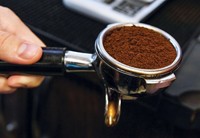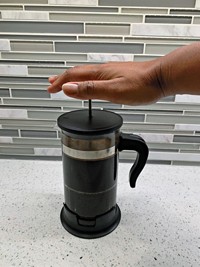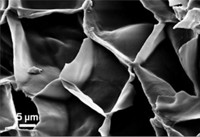Advertisement
Grab your lab coat. Let's get started
Welcome!
Welcome!
Create an account below to get 6 C&EN articles per month, receive newsletters and more - all free.
It seems this is your first time logging in online. Please enter the following information to continue.
As an ACS member you automatically get access to this site. All we need is few more details to create your reading experience.
Not you? Sign in with a different account.
Not you? Sign in with a different account.
ERROR 1
ERROR 1
ERROR 2
ERROR 2
ERROR 2
ERROR 2
ERROR 2
Password and Confirm password must match.
If you have an ACS member number, please enter it here so we can link this account to your membership. (optional)
ERROR 2
ACS values your privacy. By submitting your information, you are gaining access to C&EN and subscribing to our weekly newsletter. We use the information you provide to make your reading experience better, and we will never sell your data to third party members.
Education
Newscripts
Mementos Of A Scientist, Laboratory Cocktails
by Sophia L. Cai
January 16, 2012
| A version of this story appeared in
Volume 90, Issue 3
Galileo Galilei’s telescopes are housed at the Museo Galileo, in Italy, and Leonardo da Vinci’s anatomical sketches will soon be shown at Buckingham Palace, in England. But historians have saved more than just the celebrated works and possessions of famous scientists of yore—they’ve also kept the “disarmingly mundane,” according to a Dec. 7, 2011, Guardian blog post.
Renditions of Dmitri Mendeleev’s iconic periodic table have been plastered on chemistry classroom walls for decades, but what has happened to his hairbrush, his slacks, and his dining room chairs?

Well, we don’t know about those, but the archives of the Royal Society, in London, do possess a small ornate envelope that Mendeleev sent from Russia to England in 1901. Inside are two of Mendeleev’s business cards, one of which was used to introduce his (presumably junior) colleague Dr. Duncan to the Royal Society’s Professor Thorpe. Talk about a good letter of recommendation.
The other business card is pristinely preserved, with the chemist’s name written “Mendeleeff”—the traditional Russian spelling—and lists his title as a retired professor at St. Petersburg University. Newscripts readers can watch a “Periodic Table of Videos” clip of British chemist Martyn Poliakoff showing off these tokens at cenm.ag/cards.
But Mendeleev isn’t the only esteemed chemist whose ordinary objects are treasured today. Also in the hallowed Royal Society archives is a hand-fashioned potato masher, carved during childhood by none other than the father of nuclear physics, Ernest Rutherford. Rumor is that Rutherford made the masher for his grandmother.
Borrowing these storied items to entertain guests at cocktail parties might prove tricky, but party-going scientists have modern tools to spark some fun of their own. In the December 2011 edition of Physics World, Harvard University’s Naveen Sinha and David Weitz describe how science lovers might take cues from high-end bartenders who are making cocktail drinks with laboratory tools and techniques.>/span>

Traditionally developed by trial and error, cocktails can now be concocted by taking some tips from thermodynamics and soft-matter physics. In lieu of standard shakers and stirrers, the authors explain how mixologists are using thermocouples, centrifuges, and other lab equipment to perfect the flavor, appearance, aroma, and texture of mixed drinks.
For example, a rotary evaporator—typically used by chemists to gently remove solvents by evaporation—can be used to extract the delicate aroma from molecules that would otherwise be destroyed by the high temperatures of distillation.
And for those folks who, like James Bond, prefer their drinks shaken, not stirred, mixologists can now extract the particulates that cause shaken drinks to appear cloudy. One technique is to use centrifugation, which accelerates the settling of particulates. Another method—developed by David Arnold, a director at the French Culinary Institute, in New York City—uses gels from agar to trap the particulates.
Similarly, by taking the laws of thermodynamics into account, bartenders can prevent that first sip of neat vodka or tequila from burning the back of the throat. Alcohol burn can be reduced by serving straight spirits cold—around –18 °C. But stirring the mixture with ice dilutes the drink and diminishes the taste. Instead, vigorously shaking the mixture with ice and pouring only the rapidly cooled drink enables bartenders to preserve the flavor.
Sinha and Weitz acknowledge that classic cocktail recipes have withstood the test of time, but they also say that there is much to learn about improving the art of cocktails through scientific experimentation. So next time you throw a cocktail party, pull out that extra rotovap you’ve got lying around and try some mixology for your guests.





Join the conversation
Contact the reporter
Submit a Letter to the Editor for publication
Engage with us on Twitter